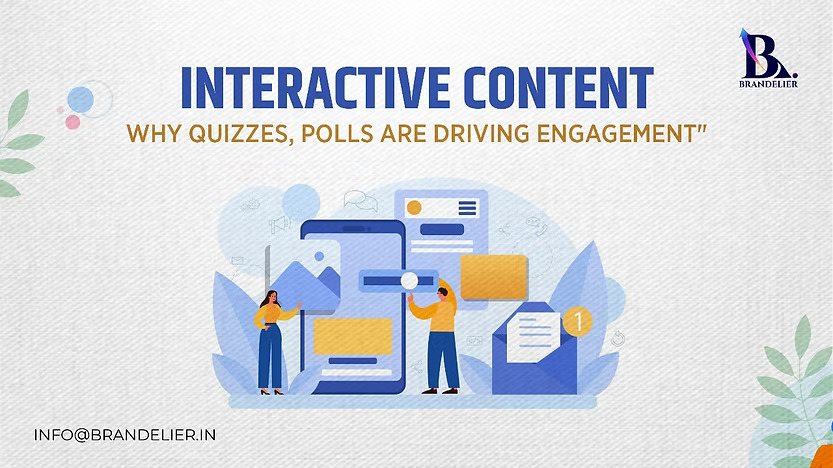Getting attention is one thing in the fast-paced digital world of today; maintaining it is quite another. The internet is overflowing with interactive content, making it harder than ever to hold an audience’s attention. Though instructive, traditional, static content—such as blog posts and infographics—frequently fails to hold readers’ attention in a meaningful and long-lasting way. With an interactive, customised experience that keeps users coming back for more, these formats are proven to be significantly more compelling than their static counterparts.
Although the idea of interactive material is not new, it has undergone substantial development recently. Today’s marketers understand that the modern consumer wants to engage, not just read. People’s interactions with material are changing, which is what’s causing this transformation. Users now want to feel like they are participating in the conversation rather than just being passive recipients. The desire for interaction is revolutionising marketing and causing driving engagement metrics to soar.
This psychological need for engagement is tapped upon via interactive content like surveys, quizzes, experiences. 81% of marketers concur that interactive content attracts attention more successfully than static information, per a research by the Content Marketing Institute.
Why Quizzes Work So Well
With good reason, quizzes are among the most frequently used formats in interactive content. Whether it’s through knowledge tests, personality assessments, or decision-making surveys, people are naturally drawn to content that helps them learn more about themselves. The sense of curiosity, coupled with the element of gamification, makes quizzes both engaging and entertaining. From casual social media users to serious consumers, everyone enjoys the feeling of making discoveries—especially when the experience is quick, visual, and rewarding.
From a marketing standpoint, quizzes are particularly powerful tools. They offer an effective way to gather valuable first-party data, which is increasingly important in a privacy-focused digital world. By analyzing how users respond to questions, marketers can segment audiences more effectively and tailor content, recommendations, or offers accordingly. For example, a fashion brand might use a style quiz to direct customers to the perfect product collection, increasing both relevance and conversion rates.
However, the true strength of quizzes lies in their ability to provide instant feedback. This immediate gratification—seeing results right after answering a few questions—keeps users engaged and encourages repeat participation. Whether someone is discovering which product suits their needs, identifying their personality type, or testing their knowledge on a topic they care about, the payoff feels personal and meaningful. That emotional connection can be further amplified when users share their results, boosting brand visibility and encouraging peer-to-peer engagement.
Moreover, well-crafted quizzes can drive deeper user interaction, increase time spent on site, and improve retention. They turn passive readers into active participants, fostering a sense of involvement that traditional content rarely achieves. As a result, quizzes not only entertain but also educate, inform, and convert—making them one of the most versatile tools in digital engagement strategies.
Polls: Quick, Engaging, and Insightful
Another very successful type of interactive material is polls. They are simple to make, simple to engage in, and offer immediate satisfaction. Users can voice their opinions and see how they stack up against others with a few clicks. Because users feel like they’re a part of a bigger conversation, this sense of community driving engagement is a powerful motivator for participation.
Real-time decision-making, feedback collection, and audience mood assessment are all made easier with polls. A quick survey that asks your followers to select their favourite good or service might reveal consumer preferences right away. The simplicity of polls is their beauty; they provide a low-commitment method for consumers to interact with your company while still providing useful information for marketers
Conclusion:
Why Interactive Content is the Key to Modern Marketing
One of the best strategies to captivate consumers in a world when attention spans are getting shorter is through interactive content. AR, polls, and quizzes give users a more engaging, customised experience that entices them to return. In addition to drawing attention, these forms foster meaningful interactions that boost engagement, foster brand loyalty, and yield insightful data about customers.
The usage of polls, quizzes, and augmented reality in marketing campaigns will only increase as customers continue to want more personalised, interactive experiences. In addition to standing out in a congested digital world, brands who embrace this change will build stronger relationships with their audience and eventually achieve long-term success.

